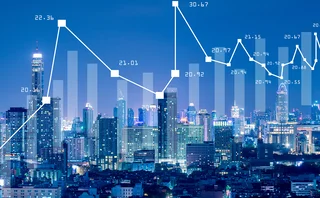
VAR: risk mitigant or amplifier?
Value-at-risk is a far-from-perfect risk measure. Jon Danielsson, Ulrich Klueh and Laura Kodres take a close look at the lessons to be learnt from its use in stressful or volatile periods, such as the current financial crisis
The current financial market crisis has elicited accusations that mechanistic adherence to risk management systems, such as value-at-risk (VAR) market risk measures, may have been a contributing factor. The model in the box opposite explores how, in combination with desired capital levels, risk management techniques - including VAR-type techniques - can lead to destabilising asset price behaviour in certain circumstances.
It is true that VAR-type techniques can help risk managers judge and potentially mitigate risks, thereby protecting their individual institution from adverse events. However, the interaction of rational responses from individual institutions holding similar positions during market stress can collectively cause detrimental asset price dynamics.1 While difficult to anticipate, risk managers need to be aware that the rigorous use of some risk management techniques can have negative systemic implications.
The VAR measure is one of several measures that seek to unify traded positions across a number of different assets to calculate the potential loss on a portfolio that would exceed a given dollar level a certain percentage of the time. That is, VAR is an estimate of the expected loss that an institution is unlikely to exceed in a given period with a particular degree of confidence, often assumed to be 95% or 99% of the time. It is used broadly in the financial industry as one of a number of metrics to assess market risk.
It is easy to demonstrate that the VAR measure - or VAR-type measurements - increases for a given portfolio of assets in stressful times when, as is typically the case, the volatility of the underlying assets rises or the correlations among them increases.
Only users who have a paid subscription or are part of a corporate subscription are able to print or copy content.
To access these options, along with all other subscription benefits, please contact info@risk.net or view our subscription options here: http://subscriptions.risk.net/subscribe
You are currently unable to print this content. Please contact info@risk.net to find out more.
You are currently unable to copy this content. Please contact info@risk.net to find out more.
Copyright Infopro Digital Limited. All rights reserved.
You may share this content using our article tools. Printing this content is for the sole use of the Authorised User (named subscriber), as outlined in our terms and conditions - https://www.infopro-insight.com/terms-conditions/insight-subscriptions/
If you would like to purchase additional rights please email info@risk.net
Copyright Infopro Digital Limited. All rights reserved.
You may share this content using our article tools. Copying this content is for the sole use of the Authorised User (named subscriber), as outlined in our terms and conditions - https://www.infopro-insight.com/terms-conditions/insight-subscriptions/
If you would like to purchase additional rights please email info@risk.net
More on Market risk
Market risk solutions 2023: market and vendor landscape
A Chartis Research report that examines the structural shifts in enterprise risk systems and the impact of regulations, as well as the available technology.
The new rules of market risk management
Amid 2020’s Covid-19-related market turmoil – with volatility and value-at-risk (VAR) measures soaring – some of the world’s largest investment banks took advantage of the extraordinary conditions to notch up record trading revenues. In a recent Risk.net…
ETF strategies to manage market volatility
Money managers and institutional investors are re-evaluating investment strategies in the face of rapidly shifting market conditions. Consequently, selective genres of exchange-traded funds (ETFs) are seeing robust growth in assets. Hong Kong Exchanges…
FRTB spurs data mining push at StanChart
Bank building “single golden source” of trade data in a bid to lower NMRF burden
Asian privacy laws obstruct FRTB data pooling efforts
Bank scepticism and regulatory hurdles likely to inhibit cross-border information sharing
Seizing the opportunity of transformational change
Sponsored Q&A: CompatibL, Murex and Numerix
Doubts grow over US FRTB implementation
Fragmented roll-out would price European banks “out of the market”
Basel group shake-up has banks hoping for FRTB changes
Barger and Durand replaced by BoE's Nesbitt; banks want fresh look at P&L test







